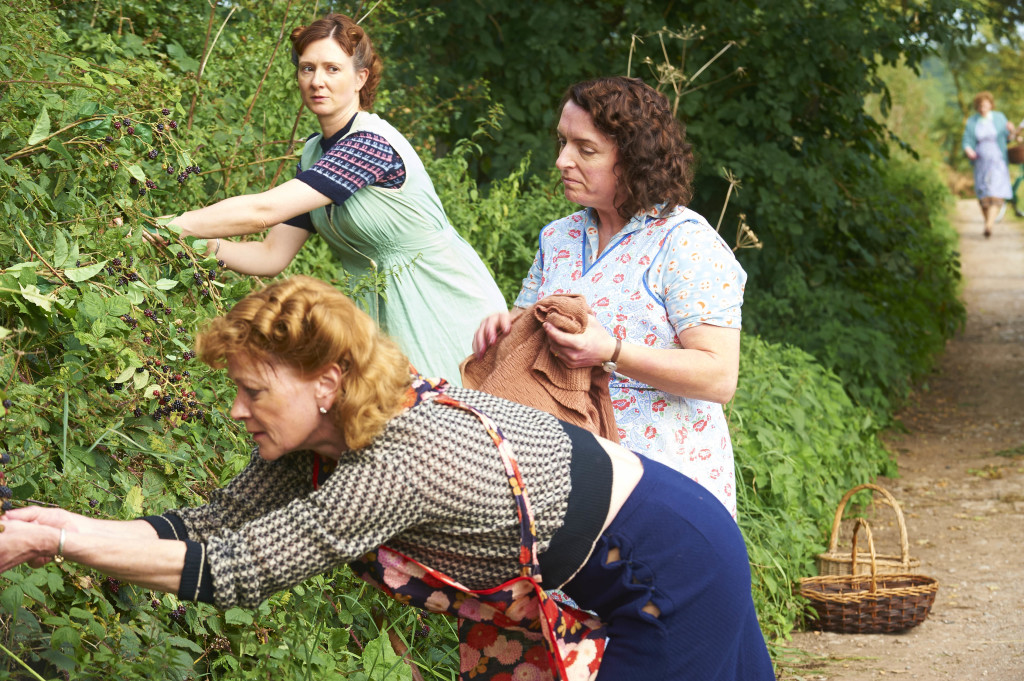Episode 2 of Home Fires takes place against a strange time for Britons during the Second World War. Britain declared war against Germany on 3 September 1939, Canada a week later on 10 September. In Britain it was followed by a combination of mass paralysis and near mass panic. There was a very real fear that the German Luftwaffe would drop thousands of tons of bombs on London and other major British cities resulting in death and destruction on an unimaginable scale. Thus over one and a half million mothers and babies, unaccompanied school children, teachers and the sick or elderly were evacuated to the countryside. In addition a further two million children were evacuated privately to relatives or with their schools. The government called for all large gatherings to be shut down, so cinemas, sports fixtures, horse racing and theatres were closed for the first two weeks of the war. In short, Britain was in a state of heightened fear.

People in the countryside were affected by the mass migration of evacuee children, though not every village took them. They were also concerned with the government’s urgent communications about growing crops on every piece of spare land available. Naturally the Women’s Institute sprang into action. It had been born in 1915 during the previous war in order to help with food production when Britons were short of essential foodstuffs. The structure of the WI, with its National Headquarters in London, a Federation office in each English and Welsh county (Scotland had the Scottish Rural Women’s Institute), and a village institute in one in three villages, meant that it was a vastly efficient machine for disseminating information and advice but also sugar, seeds and plants. With one phone call any government minister could be assured of the ears of over 328,000 WI members. They made those calls and the voluntary help requested was forthcoming. The Second World War was, in many ways, the WI’s finest hour.
At this stage in the war, everything was still unrationed, though not necessarily available. Food rationing was introduced in January 1940 when sugar, butter and bacon were limited. Further foods were added to the list over the months and years. The government wanted extra land brought into production so that the country would not be so reliant on imports. Most of Britain’s animal feed, for example, had been imported. Much of this was from the United States. With the perils of U-Boats torpedoing shipping convoys in the Atlantic, the need to become more self-sufficient was vital. The Battle for the Atlantic lasted for the entire war and hundreds of thousands of tons of shipping would be lost, in addition to tens of thousands of lives.

At the end of September the government introduced National Registration, completing more or less a census of the population. September 1939 was a busy month for the WI and the fictional Great Paxford is no exception. Everything you see played out in Episode 2 would have taken place in one form or another in villages throughout the country.
Although Simon Block’s scripts are entirely fictional, they draw deeply not only on my non-fiction book, Home Fires (Jambusters in the UK) but also on my knowledge of the wider story of the war. What we discussed very early in the planning stages of the drama was the need to capture the mood of the country in the first few episodes. Britain was at war but was not under attack. Men and women in their 40s and above had experienced the First World War and knew how terrible an impact that war had had on families. They knew that air raids and possible gas attacks could rain down on them at any moment. This was Total War, a war in which there are no non-combatants. It was as much the fear of what might come as the real threat that caused so much anxiety.
My book tells the story of the Women’s Institute in the Second World War, following the lives of a small number of women who kept diaries or accounts of the war years. One such is Edith Jones, echoes of who can be seen in one or two of the characters in the drama series. A tenant farmer from the Welsh borders, she kept a few cows, a small herd of sheep and two dozen chickens. She bottled, pickled, preserved, cured and dried fruit and vegetables for her family’s needs. Her diaries record in brief but delicious detail life on the farm set against the background of events on the world stage. On 7 September 1939 her nephew, who lived with them as a son, turned 22. She wrote in her diary: ‘Today he is a soldier in the British Army. We hope and pray that next year he will be a British farmer.’ That sentiment sums up the mood in Britain for so many women in country villages, our wonderful, fictitious Great Paxford included.
Home Fires by Julie Summers, published by Penguin USA, tells the true story of the wartime WI which inspired the drama series HOME FIRES




